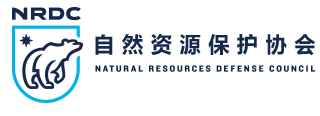近年来,船舶废气成为中国港口城市的主要大气污染源之一,香港、深圳等相继出台激励计划,鼓励靠港的船舶使用低硫油和(或)岸电。随后,长三角、珠三角和环渤海船舶排放控制区开始实施。目前这三个区域核心港口的船舶泊岸时必须转用硫含量不高于0.5%的燃油或采取等效措施。随着排放控制区实施方案的推进,2018年该规定还将扩展至区域内所有港口;2019年排放控制区内航行的所有船舶均需执行该规定。排放控制区实施后,深圳仍在为使用低硫油和岸电的船舶提供补贴,香港也继续补贴低硫油的使用。同时,深圳、香港和其他港口城市也开始讨论如何用好激励政策,促进船东采取严于排放控制区的措施。
然而,单个港口城市实施的激励计划只能为船东提供有限的经济补贴,不同港口补贴的发放标准和申请程序也不尽相同。各港口实施不同的激励计划无疑会增加管理成本,船东申请补贴的过程也较为繁复。如果同一航线上的港口或一个国家的港口能参与统一的激励计划,不仅可能吸引更多船东参加,还可以促进各个港口的交流和激励计划的完善。各个港口可通过同一激励计划的数据库查看船舶情况,减少了港口检查、审批的工作量;而参与的船舶可以更容易的向其航线上的多个港口证明其环境绩效,进而申请补贴,可极大的减少船东的工作量。
在此背景下,NRDC编制了本报告,回顾全球已实施的主要绿色航运激励计划以及其他国家采用的类似政策,旨在为中国的管理部门、港口和航运业的各个相关方参与国际计划或制定本国的激励计划提供基础信息和参考。这些计划或政策按照不同标准对船舶进行评级,然后根据结果提供补贴,以鼓励船东减少废气和(或)温室气体排放。本报告总结了四个由行业主导的激励计划,分别是“船舶环境指数”(ESI)、“清洁航运指数”(CSI)、“温室气体排放评级”(GHG Emissions Rating)和“绿色奖励”(Green Award)。参与上述计划的港口和其他参与方为参加的达标船舶发放补贴。因此,采取了绿色技术和环保操作的船舶可以持续不断的从这些港口获得奖励。本报告还介绍了挪威、瑞典和新加坡三国的激励计划。这些计划推动了其国内的绿色航运研究、技术研发和应用,促进了这些国家环保绿色航运目标的实现。

